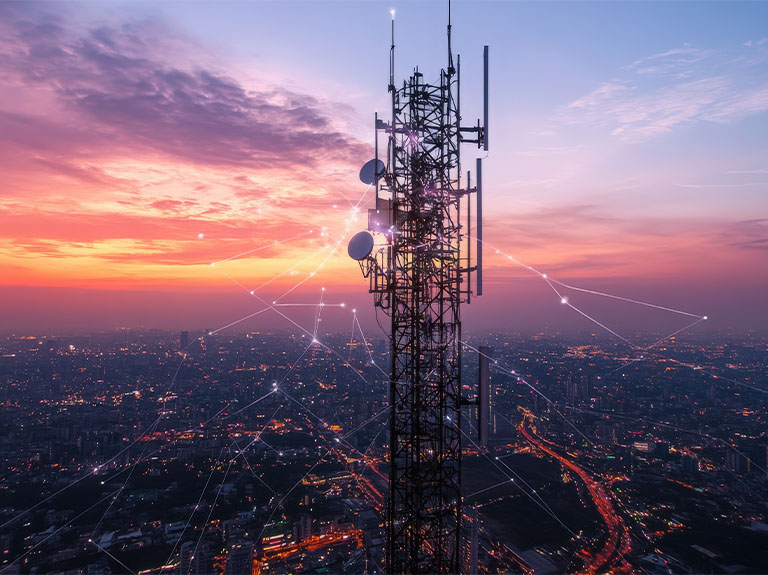AT&T’s 5G network reached nationwide coverage in July, but hitting that milestone hasn’t slowed us down. In fact, quite the opposite – we’re now more energized than ever about continuing to expand our 5G footprint (in both sub-6 and millimeter wave (mmWave) technology) to begin helping enable revolutionary new capabilities for businesses and customers alike.
AT&T was the first to introduce mobile 5G service in the U.S. in December 2018, which helped us begin learning how 5G operates in real-world environments before anyone else. And in June, we were the first to launch 5G markets with DSS (Dynamic Spectrum Sharing) technology, which allows us to share the same channel between both 4G and 5G users simultaneously depending on network demand, which in turn creates a nearly seamless experience for consumers.
Now we’re bringing that innovation to the future of 5G experiences.
5G in action
While 5G will certainly be a consumer technology long-term, we’re seeing initial demand being driven primarily by enterprise users. That’s in large part due to mmWave 5G’s low-power, highly precise location and lower-latency factors that, in line-of-sight use cases, are important to how businesses incorporate IoT and other applications into their future workflow. Edge computing is also a unique capability that 5G will enhance moving forward. Here are two of many examples for how we’re putting 5G to use for enterprise.
Smarter manufacturing
Last year, AT&T, Samsung Austin Semiconductor and Samsung Electronics America unveiled the first manufacturing-focused 5G Innovation Zone in America. The research space is designed for AT&T and Samsung to explore ideas and technology over 5G networks for improving manufacturing environments and creating smarter factories.
Adding 5G into the mix here can ultimately enable manufacturers to enhance the scale and volume of data collection, improve process flexibility by eliminating wires and improve the ability to process data in near real time. Increased bandwidth and reduced latency would be a gamechanger in improving efficiency and performance on the production floor and predicting issues before they happen. Safety also gets a boost as 5G’s future ultra-low latency could help enable critical data to get to emergency responders with nearly no lag or delay.
Bringing you to the edge
AT&T has been working with cloud service providers to add edge compute technology into our network centers as we upgrade them for 5G deployment. And as we continue to bring edge compute technologies live to more markets, we’re excited for the possibilities the technology will enable. Our mmWave 5G enterprise customers are already pursuing this reality, some using on-premise edge compute hardware to trial private 5G networks for their businesses.
Some examples of edge compute use cases in action or in trial include augmented reality experiences for retail stores, lightweight drones that can track themselves and thousands of nearby companions in near-real time, and autonomous cars that have access to nearly-instant data processing capabilities without having to install a mini data center in the trunk.
Software-based network
We have been a vocal proponent and industry leader in making our network more software-centric. Our advances in cloud native virtualization, containerization, and hardware and software disaggregation allowed us to reach our software-based networking goal of 75% prior to the end of 2020. With 5G, we’re working to embed security directly into the design, architecture and functionality of our network, eventually giving us enhanced security that will enable us to protect the network at a global scale.
And now that our 5G network is nationwide, we’re ready to soon deliver a faster, smarter, more secure network to consumers and businesses across the country.
The future, imagined
I’m excited about the possibilities of AT&T 5G and how it will create experiences for consumers and businesses that help make life easier, highly secure, more efficient and more enjoyable. The future is only limited by what can be imagined.


